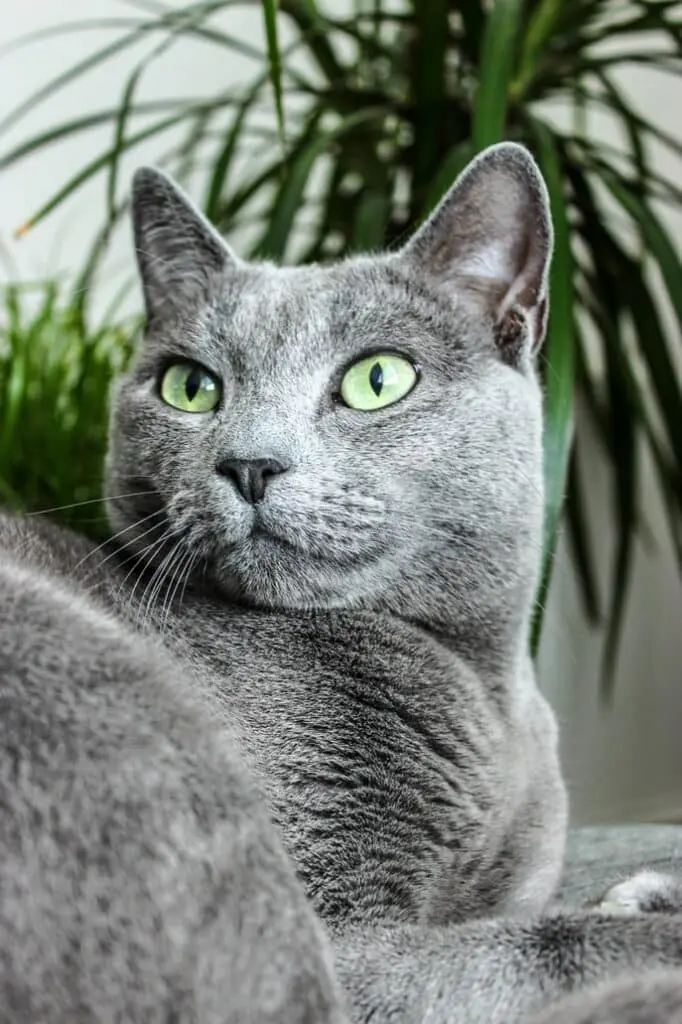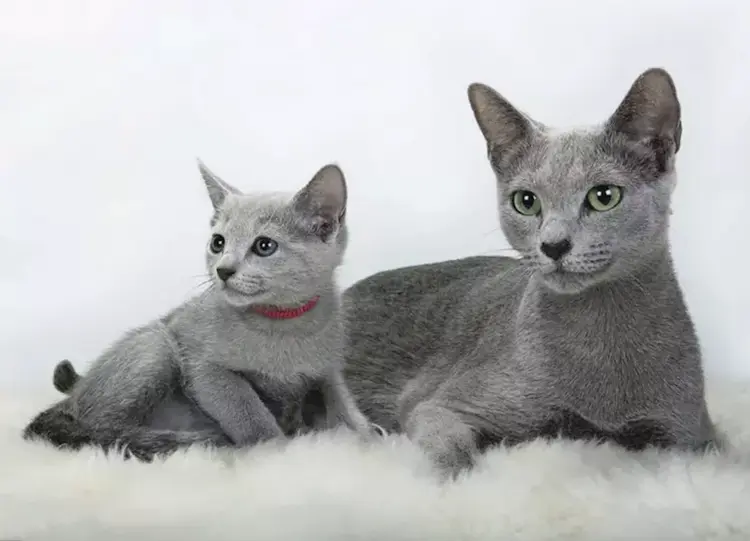There’s something undeniably captivating about the Russian Blue cat. Their sleek, silvery-blue coat, piercing green eyes, and quiet yet affectionate demeanor make them a popular choice for cat lovers around the globe. But when you decide to add a Russian Blue to your family, you might wonder: how can you make this process eco-friendly and sustainable? Let’s take a look at what makes this breed special, how to find responsible breeders, and tips for adopting your new companion with a sustainable mindset. Spoiler: It’s easier than you think, and it’s a win-win for you, your future cat, and the planet!
Who Are Russian Blue Cats?
The Russian Blue cat is known for its elegant appearance and gentle personality. This breed originated from northern Russia, and legend has it, they were favorites of Russian czars. They’re distinguished by their short, dense, and plush coat with a silver-blue sheen, their almond-shaped green eyes, and their quiet but deeply affectionate nature.
These cats are:
- Loyal Companions: Russian Blues are known to form close bonds with their owners and often follow them around the house.
- Low Maintenance: Their short, dense coat requires minimal grooming, and they tend to keep themselves clean.
- Playful and Intelligent: These cats are curious and love interactive play, making them ideal for families or individuals who want a pet to engage with.
Why Choose a Russian Blue Cat?
Aside from their striking beauty and unique personality, Russian Blue cats offer several advantages as pets. They tend to be:
- Hypoallergenic: While no cat is truly hypoallergenic, Russian Blues produce fewer allergens, making them a better option for people with mild allergies.
- Quiet and Reserved: Unlike some more vocal breeds, Russian Blues tend to be on the quieter side. They meow sparingly and usually only when they need something.
- Independent: While they love their humans, they’re not overly clingy and can entertain themselves, which is perfect for people who spend a lot of time out of the house.
Finding a Responsible Russian Blue Cat Breeder
Now, the question on your mind is likely: how can you find a responsible Russian Blue cat breeder who also cares about the environment? Responsible breeders not only prioritize the health and well-being of the animals but often take extra steps to reduce their environmental impact.

1. Research Breeders Thoroughly
You’ll want to start by researching breeders that specialize in Russian Blue cats. Look for breeders who follow ethical breeding practices, ensuring the health and temperament of their cats. Ethical breeders also avoid inbreeding and overbreeding. An easy way to gauge a breeder’s ethics is by checking if they are registered with organizations like:
- The Cat Fanciers’ Association (CFA)
- The International Cat Association (TICA)
These organizations have strict standards that breeders must follow. Additionally, read reviews or ask for references from previous clients to get an idea of how the breeder operates.
2. Ask About Their Sustainability Practices
When researching breeders, don’t hesitate to ask about their sustainability efforts. Responsible breeders often care about more than just producing healthy kittens—they also consider their environmental impact. Some eco-friendly practices to look for include:
- Reducing waste: Does the breeder recycle or compost waste? Do they use biodegradable litter?
- Natural diet: Are the cats fed a natural or organic diet that’s better for both the cats and the environment?
- Energy-efficient facilities: Breeders with energy-efficient catteries may use solar panels, eco-friendly insulation, or water-saving systems.
- Minimal travel for cats: A responsible breeder minimizes the travel distance for their cats, reducing the carbon footprint associated with transporting animals.
3. Avoid Pet Mills
Stay clear of pet mills or high-volume breeders. These facilities prioritize profit over animal welfare and often operate under poor conditions, both for the animals and the environment. Breeders who focus on the quality of life for their animals rather than quantity are much more likely to use eco-conscious practices.
Eco-Friendly Tips for Adopting a Russian Blue Cat
Once you’ve found a responsible breeder, you can take a few more steps to ensure your adoption process is as eco-friendly as possible.
1. Opt for Recycled or Sustainable Cat Supplies
Before bringing your Russian Blue kitten home, you’ll need to stock up on some essential supplies. Opt for environmentally friendly products such as:
- Recycled or sustainable cat beds: Choose beds made from organic cotton or recycled materials.
- Biodegradable litter: Traditional clay litter contributes to environmental harm through mining processes. Instead, choose a natural litter made from pine, corn, or recycled paper.
- Eco-friendly toys: Instead of plastic toys, which are harmful to the environment, choose toys made from natural materials like hemp, wool, or sustainably harvested wood.
2. Sustainable Cat Food Choices
Feeding your new Russian Blue sustainably is key. Opt for cat food brands that use sustainably sourced ingredients. Many high-quality pet food brands offer organic, free-range, or locally sourced ingredients, which reduce the environmental impact of the food’s production. Additionally, buying in bulk and avoiding individually packaged portions reduces packaging waste.
3. Support Green Veterinary Practices
Finding a veterinarian who prioritizes sustainability is another great way to ensure your cat’s care aligns with your eco-conscious lifestyle. Some veterinary practices use renewable energy, reduce paper waste, and opt for biodegradable products.
4. Adopt or Rehome
Another fantastic eco-friendly option is adopting from shelters or rescues rather than buying from a breeder. By doing so, you’re reducing the demand for breeding and giving a cat in need a second chance at a happy home. Many rescue organizations specialize in purebred cats, including Russian Blues, so it’s worth exploring this option as well.

The Challenges of Owning a Russian Blue Cat
No cat is perfect, and Russian Blues come with their own set of challenges. It’s essential to be aware of these before bringing one into your home.
1. Shy Nature with Strangers
While Russian Blues form strong bonds with their owners, they can be shy and reserved around strangers. It may take some time for your cat to warm up to new people, so if you entertain often, this might be something to keep in mind.
2. Sensitive Stomach
Some Russian Blues have sensitive stomachs, so you may need to be cautious with their diet. Introducing new foods gradually and sticking to high-quality, nutritious cat food can help avoid digestive issues.
3. High Energy in Youth
As kittens and young cats, Russian Blues can be quite energetic. You’ll need to ensure they have enough playtime and mental stimulation to avoid boredom, which can lead to destructive behavior.
Bringing Home a Russian Blue Cat the Eco-Friendly Way
Adopting a Russian Blue cat means welcoming a loyal, intelligent, and beautiful companion into your home. By taking eco-conscious steps during the adoption process—from finding a responsible breeder to using sustainable products—you can make a positive impact on the environment while giving a cat a loving home.
Want more eco-friendly pet care tips and the latest on all things feline? Subscribe to our newsletter for sustainable solutions and purr-worthy content—delivered right to your inbox! 😺



